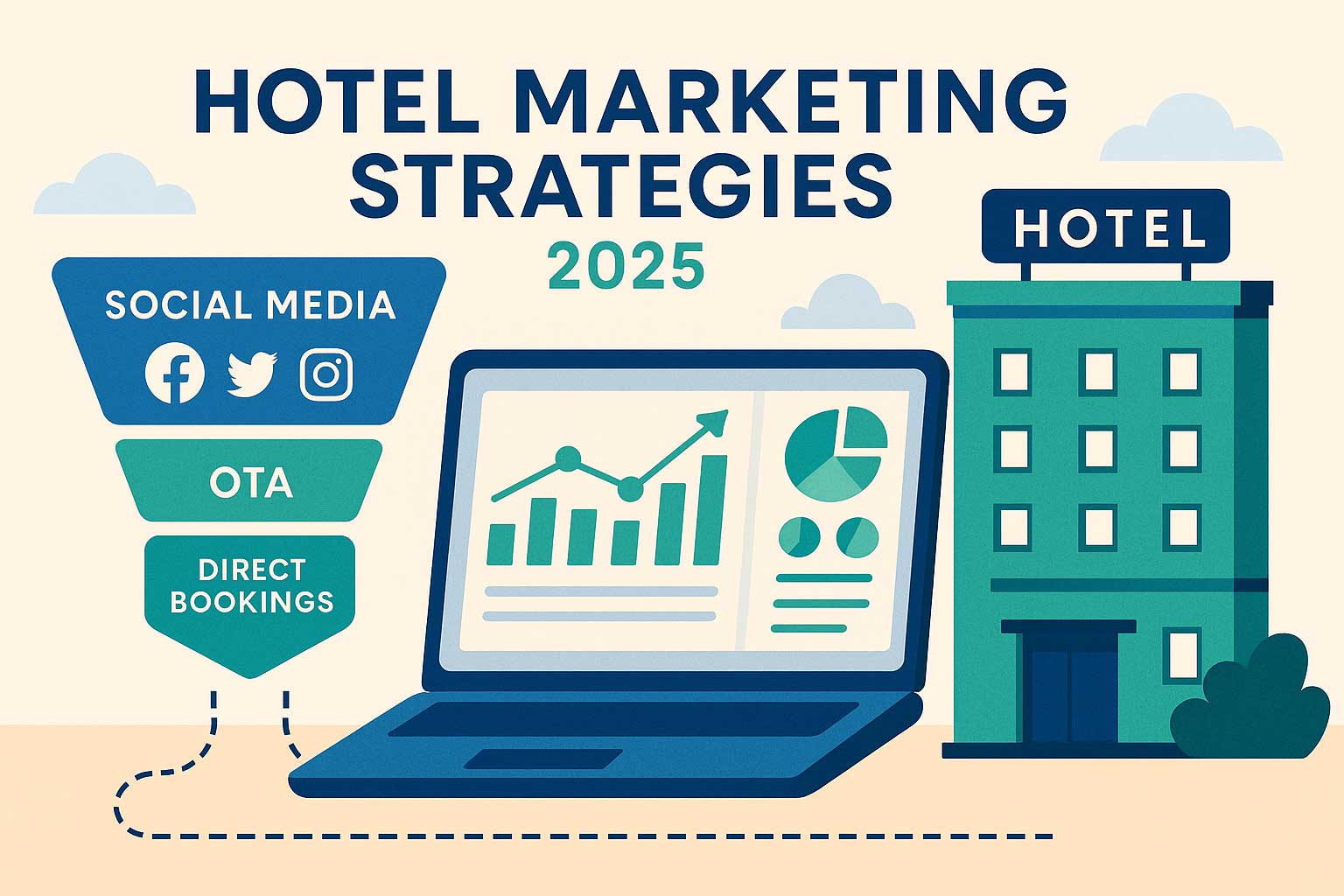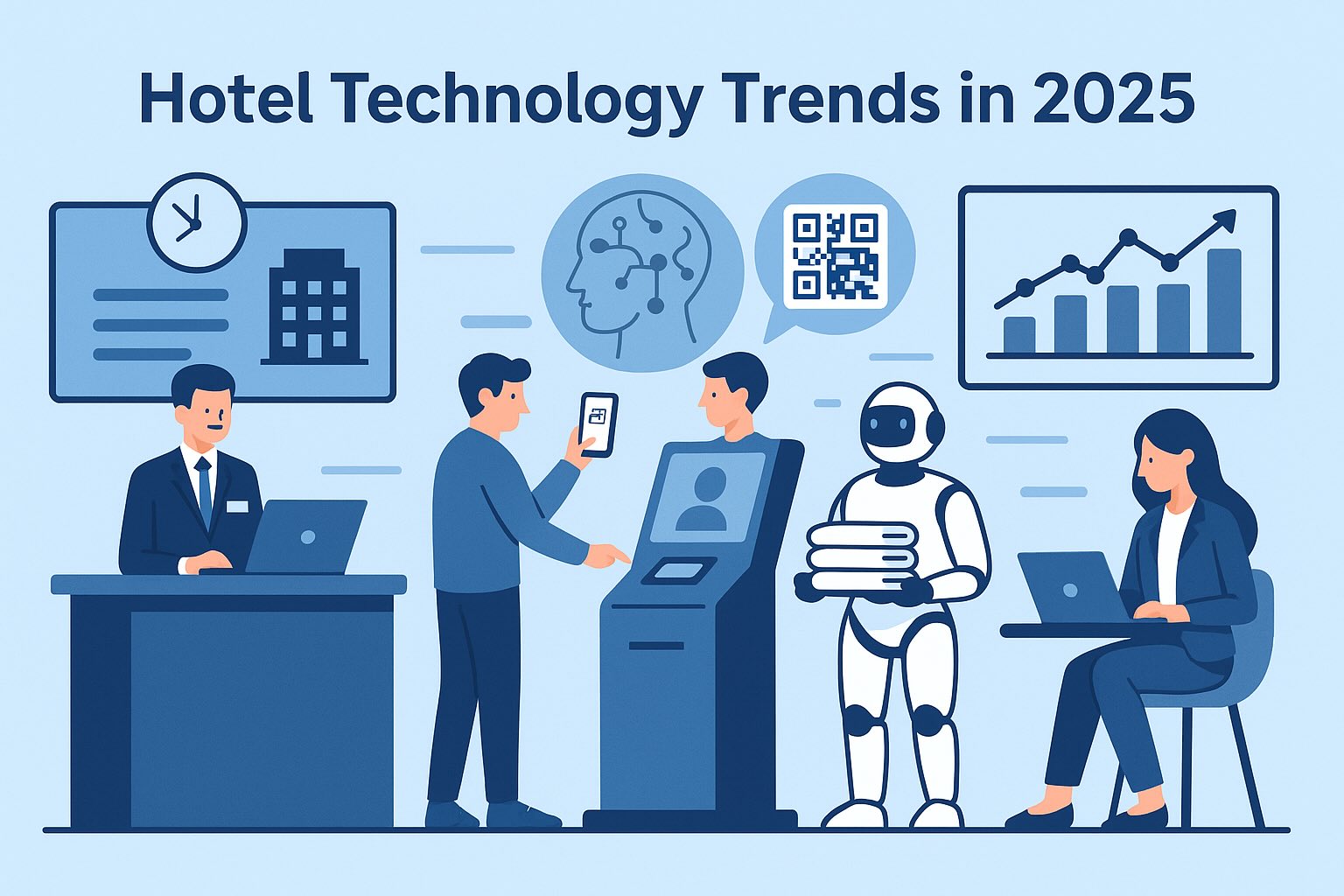Hotel Market Segmentation: Guide to Targeting the Right Guests
Aug 24, 2025
 Mika Takahashi
Mika TakahashiPopular Categories
Hotel Technology & InnovationHotel Operations OptimizationDigital MarketingIndustry TrendsRevenue ManagementHospitality Industry
Popular Categories
Trending Post

Hotel Dynamic Pricing: Complete Strategy Guide for Revenue Optimization

25 Hotel Marketing Strategy Ideas for 2025: Complete Guide

Hotel CRM: 2025 Guide and 5 best hotel CRM Software

AI Reservation Agent: Revolutionizing Hotel Booking and Guest Experience

PMS Communication: Streamlining Property Management Through Effective Guest Messaging

Increase Hotel Direct Bookings | Direct Booking Strategies 2025

Top Hotel Technology Trends in 2025: What Hoteliers Need to Know

How Technology Is Transforming the Hospitality Industry in 2025
Table of contents
In today’s bustling hospitality industry, truly understanding your guests isn’t just a nice-to-have—it’s absolutely essential. With 71% of consumers expecting personalized interactions, hotels that overlook effective market segmentation risk missing out on revenue and losing guest loyalty. Hotel market segmentation has become the backbone of smart revenue management, helping properties tailor their offerings, fine-tune pricing, and create guest experiences that keep people coming back.
The days of treating every guest the same way are long gone. Hotel guests today come from all walks of life, with different booking habits and spending styles that call for a more thoughtful, targeted approach. From busy business travelers looking for efficiency to leisure guests chasing memorable experiences, each market segment needs its own marketing and service game plan to truly unlock revenue potential.
In this guide, we’ll break down the basics of hotel market segmentation, dive into the five main hotel market segments, and share practical tips on how to spot, attract, and keep your most valuable guests. Whether you’re managing a hotel and want to boost occupancy or working on revenue strategies to lift profits, getting a grip on market segmentation is key to your success.

What is Hotel Market Segmentation?
Simply put, hotel market segmentation is the process of splitting your hotel guests into clear groups based on things they have in common—like how they book, what they need, and how much they spend. Instead of treating everyone as one big crowd, this method recognizes that different travelers have very different preferences and price sensitivities, so they deserve marketing and service that fit them specifically.
Think about it this way: a corporate traveler booking a last-minute room for a quick meeting wants something very different from a family planning a vacation months ahead. The business guest might care most about fast check-in and good WiFi, while the family will want spacious rooms and kid-friendly fun.
Hotels today gather guest data from all sorts of places—property management systems, booking engines, feedback surveys, and direct conversations. This data shows patterns in how long guests stay, when they book, and what services they use. Revenue management tools then help analyze these patterns to decide how to price rooms and allocate inventory for the best results.
The link between smart segmentation and better revenue is clear. Hotels that get segmentation right often see bumps in average daily rates (ADR), revenue per available room (RevPAR), and guest satisfaction. By focusing on the guest segments that bring in the most revenue and loyalty, hotels can spend their marketing dollars and staff efforts where they matter most.
Why Hotel Market Segmentation is Essential for Revenue Success
As guest expectations rise and competition heats up, market segmentation has become more important than ever. The numbers back this up: hotels that personalize their services through segmentation enjoy higher guest satisfaction and more direct bookings compared to those that don’t.
Segmentation helps hotels understand the wide range of needs—from business travelers who want reliable WiFi and quick checkouts to families needing connecting rooms and kids’ activities. This insight means hotels can put resources where they’ll do the most good, making sure each guest segment gets the services and amenities they value.
Targeted marketing is another big win. When you know your hotel’s ideal guests, you can craft marketing campaigns that speak directly to what motivates them. For example, hotels aiming at corporate negotiated guests might highlight meeting spaces and business perks, while those focusing on leisure guests showcase local attractions and fun activities.
Segmentation also powers smarter pricing and inventory strategies. Knowing when different segments book and how sensitive they are to price lets revenue managers use hotel dynamic pricing to fill rooms efficiently. Group bookings might be pushed during slow times, while transient guests pay premium rates when demand is high.
The impact? Hotels using solid segmentation strategies often see revenue growth of 15-25% in their first year. That comes from better inventory use, smarter marketing, and happier guests who keep coming back.
The 5 Primary Hotel Market Segments
Getting to know the five main hotel market segments is a must for crafting effective revenue and marketing plans. Each segment has its own traits, booking habits, and revenue potential, so they all need their own approach.
Transient Travelers
Transient travelers are solo leisure or business guests booking rooms on their own, usually at standard rates. This group includes families on vacation, couples on romantic trips, backpackers, digital nomads, and independent business travelers without corporate contracts.
They tend to book anywhere from last-minute to a few days ahead, though leisure travelers might plan further out for holidays or special events. They book through hotel websites, OTAs, or travel agents, making them responsive to promotions and dynamic pricing.
Think of a family from Ohio heading to Disney World, a couple celebrating an anniversary in wine country, or a freelancer booking a hotel for a short project. Each fits into the transient group but with different preferences.
Transient guests offer great upselling chances—room upgrades, spa treatments, dining packages, and local experiences can boost their spend. Targeted marketing highlighting these extras can turn a simple stay into a memorable experience.

Corporate Negotiated
This segment covers business travelers whose companies have negotiated special rates and terms with hotels. These deals usually come with volume commitments in exchange for discounts or perks.
Corporate guests tend to travel midweek, expect business-friendly services, and often book with shorter notice. Their stays might be shorter, but they’re frequent and reliable, making them a key revenue source.
Examples include employees from big companies like Amazon or Microsoft who travel regularly, or a sales rep staying at the same hotel chain multiple times a year.
Beyond room revenue, corporate guests often use meeting rooms, business centers, and dining facilities, adding to overall hotel income. Their predictable bookings help with inventory planning and steady revenue.
Group Business
Hotel group business involves block bookings—usually six or more rooms—made for weddings, conferences, sports teams, or social clubs (SMERF: Social, Military, Educational, Religious, Fraternal).
Groups book well ahead, often months in advance, and need special services like coordinated check-ins, group dining, and event spaces.
Examples include a sports team at a tournament, a wedding party, or a corporate retreat. Each group has unique needs, like early breakfasts for athletes or event coordination for weddings.
Groups help fill rooms during slower times and provide reliable revenue. For instance, a convention might book 200 rooms during a quiet season, helping the hotel maintain steady occupancy.
Wholesale
This segment includes guests booked through wholesalers, tour operators, and bed banks who buy rooms in bulk at discounted rates and resell them.
Wholesale guests can be tour groups, free independent travelers (FITs) using travel agents, or production crews on location.
Hotels benefit from selling bulk room blocks to these intermediaries, who handle marketing and distribution. This helps hotels reach international markets they might not access directly.
For example, a resort might partner with European tour operators to attract leisure travelers, or a city hotel might work with entertainment industry wholesalers for film crews.
Other Specialized Segments
These are niche categories like government travelers, military personnel, diplomats, or airline crews who have special booking needs and rates.
These guests often book through specific channels and require tailored services, like adhering to per diem rates or enhanced security.
Hotels near military bases or government offices might create special packages or streamlined booking processes for these groups.
Recognizing these smaller segments can uncover valuable revenue streams that don’t fit traditional categories.
Key Benefits of Implementing Hotel Market Segmentation
Smart segmentation brings real benefits that improve both your bottom line and guest happiness.
Enhanced Revenue Management
By understanding how different segments value price, hotels can set prices that maximize revenue. Corporate guests might pay more for convenience, while leisure travelers might be more price-sensitive.
Optimizing inventory by segment helps balance demand—midweek corporate stays with weekend leisure bookings, for example—boosting revenue per available room (RevPAR).
One business hotel saw a 23% RevPAR jump in 18 months by fine-tuning corporate rates and capturing premium prices from transient guests during busy times.
Improved Marketing Effectiveness
Targeted marketing campaigns resonate better and convert more than generic ads. Knowing your audience lets you craft messages that speak directly to their needs.
Understanding booking channels helps too—business travelers might book directly, while leisure guests find you on OTAs or social media.
Personalized messaging throughout the guest journey builds connection and drives bookings. Group campaigns highlight meeting spaces; leisure campaigns promote local fun.
Focusing marketing spend on your most profitable segments improves ROI and lowers acquisition costs.

Enhanced Guest Experience and Satisfaction
Tailoring services to guest types makes stays more enjoyable and encourages loyalty. Business travelers want quick check-in and reliable WiFi; leisure guests look for fun amenities and concierge help.
Personalized communication—from pre-arrival emails to post-stay offers—strengthens bonds and boosts satisfaction.
Upselling works best when it matches guest interests, like room upgrades for business travelers or spa packages for vacationers.
Special touches like dedicated check-in lines for corporate guests or family-friendly amenities show you understand your guests and care.
How to Identify Your Hotel’s Target Market Segments
Finding your best guest segments starts with digging into data and understanding who’s already booking with you.
Data Collection and Analysis
Your property management system (PMS) is a goldmine of info on booking patterns, length of stay, and spending habits.
Guest surveys add personal insights about preferences and expectations.
Social media and online reviews reveal what guests love or want improved.
Google Analytics shows how different guests navigate your website and booking process.
Guest Profiling and Segmentation
Build guest personas that go beyond age and location to include booking habits, price sensitivity, and service needs.
Look at booking windows, stay lengths, and seasonal trends.
Analyze revenue contribution to prioritize segments that bring the most value.
Consider where guests come from—international vs. domestic—and tailor marketing accordingly.
Competitive Analysis and Market Positioning
Check out your competitors’ guest mix and market share to spot gaps and opportunities.
Find underserved segments in your area and tailor your offerings to attract them.
Position your hotel’s strengths—like location or amenities—to appeal to target segments.
Seasonal patterns and local demand generators influence which segments to focus on and when.

Strategies to Attract and Retain Target Segments
Once you know your segments, it’s time to develop strategies that speak to them.
Tailored Marketing and Distribution
Choose booking channels that match segment preferences—direct bookings for corporate guests, OTAs and social media for leisure travelers.
Create segment-specific promotions and packages that highlight what matters to each group.
Use content marketing and social media ads to reach your audiences with relevant stories and offers.
Customized Service Offerings
Design amenities and packages that add value for each segment—express check-in for business travelers, family fun bundles for leisure guests.
Partner with local businesses and tour companies to offer exclusive experiences.
Offer tech options that suit different guests, from mobile check-in to traditional service.
Develop loyalty programs with rewards tailored to segment preferences.
Pricing and Revenue Optimization
Use dynamic pricing to match demand and price sensitivity.
Bundle services and create packages that appeal to groups or leisure travelers.
Offer length-of-stay discounts for extended bookings.
Adjust prices seasonally to capture peak demand and maintain loyalty during slow periods.
Technology Solutions for Market Segmentation Success
Technology is your friend when it comes to smart segmentation.
Property Management Systems (PMS)
Modern PMS platforms track guest data, booking sources, and service use, helping you spot segment patterns.
Built-in analytics let you monitor segment performance and guide decisions.
Integration with revenue management and CRM tools gives a full picture of guest behavior.
Channel Management and Distribution
Automate inventory distribution to reach your target segments where they book.
Set channel-specific rates to optimize pricing and maintain rate parity.
Track performance by channel and segment to refine your strategy.
Customer Relationship Management (CRM)
Use hotel CRM tools to personalize guest communications and marketing.
Collect and analyze feedback to improve services for each segment.
Manage loyalty programs that reward repeat guests in meaningful ways.

Measuring and Optimizing Segmentation Performance
Keep an eye on how your segments perform and tweak your approach.
Track key metrics like average daily rate, RevPAR, and occupancy by segment.
Look at guest satisfaction and repeat bookings to spot service issues or opportunities.
Analyze booking patterns for trends in lead times, cancellations, and seasonality.
Benchmark your performance against competitors to find areas for improvement.
Involve your whole team in reviewing data and acting on insights to keep segmentation strategies fresh and effective.
Conclusion
Hotel market segmentation is a game-changer, moving hotels from generic service to smart, data-driven strategies that boost revenue and delight guests. The five main segments—transient travelers, corporate negotiated, group business, wholesale, and specialized segments—each offer unique chances to grow your business.
The benefits go beyond just revenue: better marketing, happier guests, and a stronger competitive edge. Thanks to today’s technology, even smaller properties can use sophisticated segmentation to their advantage.
Success requires ongoing effort—collecting data, analyzing trends, and adapting as guests and markets evolve. But those who do will build lasting relationships with their best guests and thrive in the ever-changing hospitality industry.
Now’s the perfect time to dive into your guest data, spot your top segments, and start crafting marketing and service plans that truly connect. Your investment in understanding your guests will pay off with stronger revenue and loyal customers for years to come.

